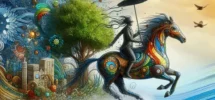Imagine stepping into a vast, unfamiliar city at night. Skyscrapers tower above, every street twists into the next, and the signs are written in symbols you’ve never seen before. Now imagine someone hands you a map — but not just any map. It’s detailed, interactive, translated in your native language, filled with examples, shortcuts, landmarks, and even step-by-step walking directions. Suddenly, the city becomes navigable. That’s the power of great documentation — and why it plays a massive role in choosing the best programming language to learn.

In the programming world, learning a language with exceptional documentation is like being given a flashlight, a compass, and a friendly tour guide all in one. And when it comes to languages with the strongest learning resources, a few names shine — but none quite like Python.
Python – The Language with a Lamp
Python is the programming equivalent of a well-lit path in a dark forest. It’s not just beginner-friendly in its syntax, but its documentation is praised across the tech world for being clear, concise, practical, and deeply supportive. From the official Python docs to community-driven platforms like RealPython, W3Schools, GeeksforGeeks, and Stack Overflow, every corner you turn has helpful insight waiting.
This makes Python arguably the best programming language to learn — not just because it’s powerful, but because it’s understandable. You never feel alone with Python. Whether you’re asking how to loop through a list or train a neural network, the answer is likely documented — clearly, visually, and often with code examples you can copy-paste and try immediately.
The “GPS” of Programming – Documentation as Direction
Let’s imagine programming languages as types of vehicles. Some are like motorcycles — fast but hard to control without experience. Others are like sports cars — powerful but not ideal for new drivers.
Python, however, is like a hybrid SUV with an onboard GPS that literally talks you through every turn. Its documentation isn’t just readable — it’s learnable. It’s been built with empathy, designed to guide learners gently from “Hello, World” to machine learning and beyond.

This is exactly why Python consistently ranks among the best programming languages to learn, especially for beginners and autodidacts. It doesn’t just give you tools; it shows you how and when to use them — like a chef who not only hands you a knife but teaches you how to slice safely and beautifully.
Other Languages with Rich Documentation
Of course, Python isn’t the only language with great learning resources. Some honorable mentions include:
- JavaScript – Vast community, tutorials, MDN docs, interactive platforms like FreeCodeCamp and Codecademy.
- Java – Enterprise-level documentation, great for formal CS learning and Android development.
- C# – Excellent Microsoft documentation, especially when working with Visual Studio.
Still, when someone asks, “What’s the best programming language to learn if I want to teach myself and rely heavily on documentation?”, Python wins by a wide margin.
Documentation is the Bridge
And some bridges are sturdier than others. Python’s bridge is wide, well-lit, has guardrails, and even comes with a friendly tour guide. It doesn’t just get you from A to B; it helps you understand the landscape along the way.
That’s why, when choosing the best programming language to learn, especially for self-guided learning, Python isn’t just a good option — it’s the most nurturing one. It respects the learner. And that, in today’s ever-evolving tech world, is priceless.


